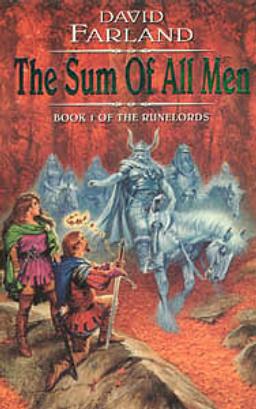ISFDB: http://www.isfdb.org/cgi-bin/pw.cgi?a18d0c

|

|

|
Now I dont think that I have read anything by David Farland before - although I think I have probably seen this book around when browsing the shelves at bookshops.
Anyway...
Basic story is not that innovative, mainly the "coming of age" of a young prince.
The beginning of the book sees him posing as a merchant in a foreign country as he tries to learn more of the country of the princess that he wants to marry (from her reputation - typical state marriage stuff) before pursuing his suit.
The end of the book sees them married and due to the death of both of their fathers, the rulers over the two Kingdoms, and he with some new powers.
The main interesting point of the book is how its magic systems work.
Wizards (and hence magic) are rare. They are elementalists rather than mages and there are only 7 mentioned in the book (seems a high number from my comment on them being rare, but 5 of them travel together as part of an army).
The main magic in the book is referred to as "taking endowments"
What this means is the transferrence of an attribute, be it strength, smell, touch, strength (referred to as Brawn), intelligence (Wit), stamina and metabolism from one person to another.
The mechanism for this is an incantation and the use of the appropriate "forcible". A forceable is best describable as a branding iron of a rare and magical metal (called blood-metal) which is made with the appropriate rune for whatever attribute as the brand.
A person called a Facilitator holds the forcible to the donor and incants a spell which causes the forcible to heat and begin to draw the attribute into it - this causes great pain to the donor - the donor also has to want to give the endowment. When the time is right, the facilitator takes the forceable and then brands the recipient which transfers the attribute.
The donor is then devoid of the attribute the gave and remains that way until the bearer of it dies, or if the donor dies the bearer loses that power. This means that most runelords keep the donors safe, in fact this is a given in the pact between donor and bearer.
One other interesting mechanic is the ability to create vectors - that is take an endowment from one person then bestow endowments on them of the same type and use them as a focus for that type. The vector can also have been endowed with these attributes before becoming a vector. This way a runelord can recieve say 10 endowents of wit from one single branding
It is these runic brandings that give the series its name - The Runelords.
All in all an interesting book, fairly standard with some nice ideas.